Compact Unit
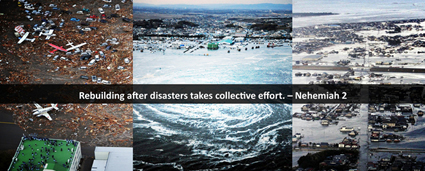
PROVIDING AID DURING NATURAL AND MANMADE DISASTERS
Sunday, June 10, 2012
Guest Writer for This Unit: Thomas Grinter is an ordained minister in the A.M.E. Zion Church and currently serves as Adjunct Instructor in Old Testament Studies at Hood Theological Seminary in Salisbury, NC.
The unit you are viewing, Providing Aid During Natural and Manmade Disasters, is a compact unit. This means that it is not a complete commentary of the Scripture(s) selected for this day on the calendar, nor does it have a full, supporting cultural resource unit. Because this is the first year that this liturgical moment has been featured by The African American Lectionary, a full worship unit is included. To enliven the imagination of preachers and teachers, we have provided a sermonic outline, songs, suggested books, and suggested articles, links, and videos. 2011 was the first year that The African American Lectionary posted compact units for moments on its liturgical calendar.
I. Description of the Liturgical Moment
This moment in the liturgical year guides churches in reflecting upon the devastating impact of natural and manmade disasters. Such catastrophes seem to constantly ravage our world. Tornadoes and earthquakes, oil spills and airplane crashes, floods and wildfires, droughts and famines destroy lives and property each year.
Services of lament are needed to help suffering congregants express the pain and grief caused by disaster. Such lament allows persons to worshipfully release anger and anguish while trusting God as the ultimate source who will heal the brokenness. Christian communities should be encouraged to empathetically remember the plight of those affected.
Also, love and human solidarity should spur churches to engage in activities that provide aid during relief efforts. Educational workshops and training sessions can be sponsored by churches to inform and equip Christians to help. Services of prayer can bolster disaster relief efforts by keeping volunteers excited and encouraged. As recovery takes place, thanksgiving and praise services can allow persons to rejoice in the victories God provides even after disaster.
Decades after the burning of the city of Jerusalem, Nehemiah takes initiative to lead a disaster relief effort. As s cupbearer of a Persian king, Nehemiah uses his position, access, and favor to gain necessary resources. God enables Nehemiah to return to Jerusalem and overcome obstacles as he guides his fellow Jews in rebuilding the wall of Jerusalem.
My City of Ruins – New Orleans after Katrina
With this material and video as our backdrop, we provide a sermonic outline for Providing Aid During Natural and Manmade Disasters Day.
II. Providing Aid During Natural and Manmade Disasters: Sermonic Outline
A. Sermonic Focus Text: Nehemiah 2 (New Revised Standard Version)
(v. 1) In the month of Nisan, in the twentieth year of King Artaxerxes, when wine was served him, I carried the wine and gave it to the king. Now, I had never been sad in his presence before. (v. 2) So the king said to me, “Why is your face sad, since you are not sick? This can only be sadness of the heart.” Then I was very much afraid. (v. 3) I said to the king, “May the king live forever! Why should my face not be sad, when the city, the place of my ancestors’ graves, lies waste, and its gates have been destroyed by fire?” (v. 4) Then the king said to me, “What do you request?” So I prayed to the God of heaven. (v. 5) Then I said to the king, “If it pleases the king, and if your servant has found favor with you, I ask that you send me to Judah, to the city of my ancestors’ graves, so that I may rebuild it.” (v. 6) The king said to me (the queen also was sitting beside him), “How long will you be gone, and when will you return?” So it pleased the king to send me, and I set him a date. (v. 7) Then I said to the king, “If it pleases the king, let letters be given me to the governors of the province Beyond the River, that they may grant me passage until I arrive in Judah; (v. 8) and a letter to Asaph, the keeper of the king’s forest, directing him to give me timber to make beams for the gates of the temple fortress, and for the wall of the city, and for the house that I shall occupy.” And the king granted me what I asked, for the gracious hand of my God was upon me.(v. 9) Then I came to the governors of the province Beyond the River, and gave them the king’s letters. Now the king had sent officers of the army and cavalry with me. (v. 10) When Sanballat the Horonite and Tobiah the Ammonite official heard this, it displeased them greatly that someone had come to seek the welfare of the people of Israel.
(v. 11) So I came to Jerusalem and was there for three days. (v. 12) Then I got up during the night, I and a few men with me; I told no one what my God had put into my heart to do for Jerusalem. The only animal I took was the animal I rode. (v. 13) I went out by night by the Valley Gate past the Dragon’s Spring and to the Dung Gate, and I inspected the walls of Jerusalem that had been broken down and its gates that had been destroyed by fire. (v. 14) Then I went on to the Fountain Gate and to the King’s Pool; but there was no place for the animal I was riding to continue. (v. 15) So I went up by way of the valley by night and inspected the wall. Then I turned back and entered by the Valley Gate, and so returned. (v. 16) The officials did not know where I had gone or what I was doing; I had not yet told the Jews, the priests, the nobles, the officials, and the rest that were to do the work.
(v. 17) Then I said to them, “You see the trouble we are in, how Jerusalem lies in ruins with its gates burned. Come, let us rebuild the wall of Jerusalem, so that we may no longer suffer disgrace.” (v. 18) I told them that the hand of my God had been gracious upon me, and also the words that the king had spoken to me. Then they said, “Let us start building!” So they committed themselves to the common good. (v. 19) But when Sanballat the Horonite and Tobiah the Ammonite official, and Geshem the Arab heard of it, they mocked and ridiculed us, saying, “What is this that you are doing? Are you rebelling against the king?” (v. 20) Then I replied to them, “The God of heaven is the one who will give us success, and we his servants are going to start building; but you have no share or claim or historic right in Jerusalem.”
B. Possible Titles
ii. Rebuilding after Ruin
iii. Help and Hope in GodC. Point of Exegetical Inquiry
In any text there can be several words or phrases that require significant exegetical inquiry. One exegetical inquiry raised by this text is the historical circumstances surrounding the destruction of the Temple and the city of Jerusalem. King Solomon built the Temple as a house for God where Israelites gathered for worship. God’s presence gave the Israelites their identity as the people of God and ensured divine protection. In 586 BCE, the Babylonian Empire, led by King Nebuchadnezzar, destroyed Judah, burning Jerusalem, its capital city, to the ground along with the Temple. Devastated and hopeless, the Judeans suffered in exile in Babylon until the Persians came to power under King Cyrus II in 539 BCE. Persian kings like Artaxerxes were more tolerant than the Babylonians had been, allowing the Jews to return to and rebuild their homeland. The Temple was rebuilt in 515 BCE, and Nehemiah undertook the task of reconstructing the walls around Jerusalem.
III. Introduction
 |
Several challenges face those leading communities to rebuild after natural and manmade disasters. The necessary resources to effectively mobilize and sustain relief efforts must be acquired. Billions of dollars and countless hours of work have been spent to help the people of Haiti after the 2010 earthquake that struck the small country. Those who stand in solidarity with affected communities must generously give of their finances and services to support recovery, especially in places where people are poor. |
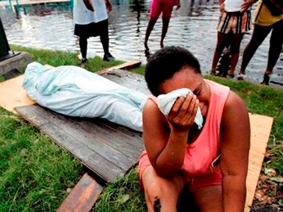 |
In addition, communities impacted by disasters need assistance to cope with and heal from the emotional and psychological effects of loss. Counseling and therapeutic services continue to be extended to persons impacted by Hurricane Katrina that ripped apart the Gulf coast in 2005. Hope must be revived to motivate a community’s active involvement in their rebuilding initiatives. |
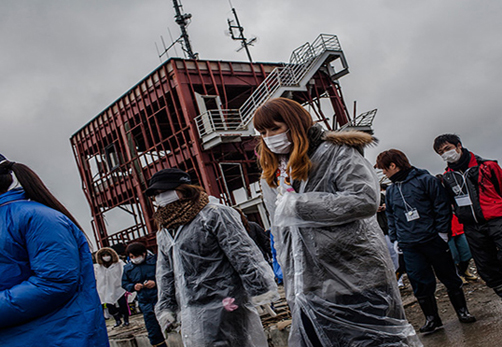
Students in Japan paying their respects to those who died from the 2011 earthquake
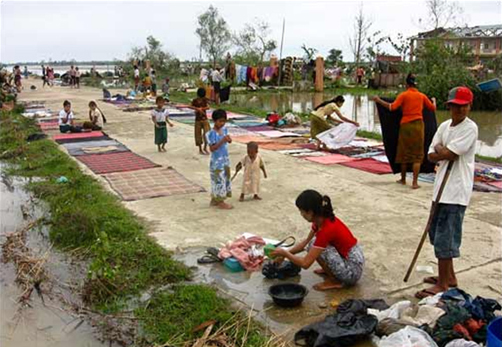
Victims of the Myanmar cyclone. Estimates are that 1 million were left homeless.
Susan Moeller, a University of Maryland professor who wrote the book Compassion Fatigue: How the Media Sell Disease, Famine, War and Death, said, “Hurricanes are natural made-for-modern-media productions that gain huge readers and audiences. But the public begins to turn away from crises when they feel helpless: that’s there’s nothing they can do, or nothing more that they can do,” she said. “People have an internal switch off.”2
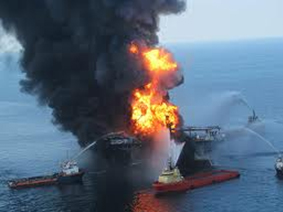 |
There are always obstacles to recovery efforts. Many of us can recall the political and economic interests of businesspeople and government officials that hampered responses to the 2010 BP oil spill in the Gulf of Mexico that devastated parts of the U.S. Gulf Coast. Individuals and groups with selfish and unproductive motives must be confronted and overcome so that relief efforts can succeed. Then, those who are fatigued by one disaster after another must be re-motivated, not so that they can give until it hurts, but so that they can give until it helps. |
Nehemiah faces these challenges in leading the Jewish people to rebuild the walls of Jerusalem. His faith in God and love for his people inspire him to use the resources at his disposal in the rebuilding effort. He had a mind to work in spite of the fatigue of some, in spite of naysayers, and in spite of those with bad motives who attempted to get him to come down from his work. He was determined; he did “not come down” from his good work.
IV. Moves/Points
Move/Point One: God motivates others to provide aid after disaster.
- God creates opportunities to request aid from people who have resources;
- God listens to prayers for help and guidance; and
- God’s grace enables leaders to engage in recovery efforts.
Move/Point Two: God empowers devastated communities to rebuild.
- God inspires community leaders with visions to rebuild;
- God gives communities hope for restoration; and
- God’s love encourages communities to seek the common good.
Move/Point Three: God strengthens leaders to overcome obstacles.
- God’s purposes keep leaders focused;
- God’s power gives leaders resolve; and
- God’s authority guides leaders to make good decisions.
V. Celebration
Emmanuel, God is with us, before the storm, in the storm, and in the recovery from each storm! God stands with those who suffer loss, and God works to bring restoration and wholeness. Despite the challenges and obstacles we face in this world, God is willing and able to come to our aid. Tornadoes may knock us down, but never out. Earthquakes may shake us, but God is a firm foundation. Calamity may befall us, but God sustains us. God is with us. God is with us through it all. God is with us!
VI. Illustration
A tornado tore apart a small rural town in Kentucky. Several homes in one neighborhood were destroyed, but the families living there escaped unharmed. After the storm, one family returned to find their home in pieces. But one thing remained intact—a wooden cross still stood on the mantle. This family heirloom reminded them of their faith in God and motivated them to rebuild. Beyond devastation, God still brings hope and renewal.| —Thomas Grinter |
See the Sermon Illustrations section of the African American Lectionary for additional illustrations that you may wish to use in presenting a sermon for this moment on the liturgical calendar.
VII. Sounds, Sights, and Colors in This Passage
Sounds: Nehemiah talking to the king; sounds of animals; Nehemiah encouraging the people and the people responding favorably; opponents’ accusations and Nehemiah’s rebuke;
Sights: The sad look on Nehemiah’s face; the gray graves of the ancestors; the city of Jerusalem at night; broken walls and gates; rubble; and
Colors: Darkness.
VIII. Resources to Aid in Disaster Relief Efforts
Providing aid after manmade and natural disasters can be complex, especially if those in need are poor, elderly, and in areas that have been devastated by floods, tornadoes, or a combination of both. You may remember the complexity of aiding victims after Hurricane Katrina. Tornadoes are the most common type of natural disaster; but, long-term droughts can be far more destructive.
Following are agencies that can be contacted to assist churches and individuals who want to provide disaster aid in their community, state, and/or around the world. Contact the Federal Emergency Management Agency (FEMA) at www.Fema.gov for a comprehensive list of organizations and agencies that provide disaster relief in America and around the world.
You should also contact your denomination to get information on their disaster relief efforts. Any entity with which a church or individual decides to partner should be thoroughly vetted, especially if a church or individual is solely giving money to assist in relief efforts. FEMA can aid you in this process.
Below are some of the most-known entities providing disaster relief in America and around the world.
- Adventist Development Relief Agency (ADRA)
12501 Old Columbia Pike
Silver Spring, MD 20904
Phone: 1-800-424-2372
Website: www.adra.org
- African Methodist Episcopal Church Department of Global Witness & Ministry
Charleston Executive Park
1587 Savannah Highway, Suite A
Charleston, SC 29407-7820
Phone: 843-852-2645
Website: www.ameglobalmissions.org
- Lot Carey Foreign Mission Society
This Society helps churches extend their Christian witness to the ends of the earth. It is an African American Baptist Mission foundation that was formed in 1897. It currently does mission work in America, in 6 countries in Africa, in Asia, in the Caribbean (Haiti and Jamaica), and in Europe.
220 Eye Street NE, Suite 220
Washington, DC 20002
Phone: 202-543-3200
Twitter: lottcarey
Website: www.lottcarey.org
The remainder of this list is provided by FEMA.
- The American Red Cross is required by Congressional charter to undertake disaster relief activities to ease the suffering caused by a disaster. Emergency assistance includes fixed/mobile feeding stations, shelter, cleaning supplies, comfort kits, first aid, blood and blood products, food, clothing, emergency transportation, rent, home repairs, household items, and medical supplies. Additional assistance for long-term recovery may be provided when other relief assistance and/or personal resources are not adequate to meet disaster-caused needs. The American Red Cross provides referrals to the government and other agencies providing disaster assistance.
- Brethren Disaster Ministries provides volunteers to clean up debris and to repair or rebuild homes for disaster survivors who lack sufficient resources to hire a contractor or other paid labor. Working with long-term recovery committees, the volunteers stay until the work is done. The presence of these volunteer work teams helps to ease the trauma that is felt in the aftermath of a disaster.
- The Catholic Charities USA Disaster Response is the organization that unites the social services agencies operated by most of the 175 Catholic dioceses in the United States. The Disaster Response section of Catholic Charities USA provides assistance to communities in addressing the crisis and recovery needs of local families. Catholic Charities agencies emphasize ongoing and long-term recovery services for individuals and families, including temporary housing assistance for low-income families, counseling programs for children and the elderly, and special counseling for disaster relief workers.
- Children’s Disaster Services (CDS) provides childcare in shelters and disaster assistance centers by training and certifying volunteers to respond to traumatized children with a calm, safe, and reassuring presence. CDS provides respite for caregivers as well as individualized consultation and education about their child’s unique needs after a disaster. CDS creates a more favorable work environment for the staff and volunteer of their partner agencies. Through consultation or workshops specifically tailored to each situation, CDS works with parents, community agencies, schools, or others to help them understand and meet the special needs of children during or after a disaster.
- Christian Disaster Response (CDR) worked in cooperation with the American Red Cross, the Salvation Army, Church World Service Disaster Response, and NOVAD to enable local church members to become effective volunteers for assignment on national disasters. CDR provides disaster assessments, fixed/mobile feeding facilities, and in-kind disaster relief supplies. CDR also coordinates and stockpiles the collection of donated goods through their regional centers throughout the U.S.
- Church World Service (CWS) Disaster Response assists disaster survivors through partner organizations in the U.S. and worldwide on behalf of its 35 member communions affiliated agencies. CWS deploys Emergency Response Specialists who (1) coordinate and conduct training to assure that its partners can carry on effective long-term recovery efforts when disasters strike and (2) work with its partners in developing and implementing projects that address unmet needs of vulnerable populations.
- The Episcopal Church Presiding Bishop’s Fund for World Relief responds to domestic disasters principally through its network of nearly 100 U.S. dioceses and over 8,200 parishes. It also sends immediate relief grants for such basics as food, water, medical assistance, and financial aid within the first 90 days following a disaster. Ongoing recovery activities are provided through rehabilitation grants, which offer the means to rebuild, replant ruined crops, and counsel those in trauma. The Episcopal Church works primarily through Church World Service in providing its disaster-related services.
- The Friends Disaster Services (FDS) provides clean-up and rebuilding assistance to the elderly, disabled, low income, or uninsured survivors of disasters. It also provides an outlet for Christian service to Friends’ volunteers, with an emphasis on love and caring. In most cases, FDS is unable to provide building materials and, therefore, looks to other NVOAD member agencies for these materials.
- The Lutheran Disaster Response (LDR) provides for immediate disaster response, in both natural and technological disasters, long-term rebuilding efforts, and support for preparedness planning through synods, districts, and social ministry organizations. The disasters to which LDR responds are those in which needs outstrip available local resources. LDR provides for the coordination of 6,000 volunteers annually. In addition, LDR provides crisis counseling, support groups, mental health assistance, and pastoral care through its accredited social service agencies.
- The National Emergency Response Team (NERT) meets the basic human needs of shelter, food, and clothing during times of crisis and disaster. NERT provides Emergency Mobile Trailer units (EMTUs), which are self-contained, modest living units for up to 8–10 people, to places where disaster occurs. When EMTUs are not in use, they serve as mobile teaching units used in Emergency Preparedness programs in communities.
- The Nazarene Disaster Response provides clean-up and rebuilding assistance, especially to the elderly, disabled, widowed, and those least able to help themselves. In addition, a National Crisis Counseling Coordinator works into the recovery phase by assisting with the emotional needs of disaster victims.
- The Presbyterian Disaster Assistance Office works primarily through Church World Service in providing volunteers to serve as disaster consultants and funding for local recovery projects that meet certain guidelines. This agency also provides trained volunteers who participate in the Cooperative Disaster Child Care program. On a local level, many Presbyterians provide volunteer labor and material assistance.
- The Southern Baptist Disaster Relief Fund provides more than 200 mobile feeding units staffed by volunteers who can prepare and distribute thousands of meals a day. Active in providing disaster childcare, the agency has several mobile childcare units. Southern Baptists also assist with clean-up activities, temporary repairs, reconstruction, counseling, and bilingual services.
- The United Methodist Committee on Relief provides funding for local units in response and recovery projects based on the needs of each situation. This agency also provides spiritual and emotional care to disaster victims and long-term care of children impacted by disaster.
- World Vision trains and mobilizes community-based volunteers in major response and recovery activities; provides consultant services to local unaffiliated churches and Christian charities involved in locally-designed recovery projects; and collects, manages, and organizes community-based distribution for donated goods.
IX. Songs to Accompany This Sermon
See the special Providing Aid During Natural and Manmade Disasters Music and Worship Resource unit prepared by Lectionary Team member Michelle Riley Jones.
X. Videos, Audio, and/or Interactive Media
- When the Levees Broke: A Requiem in Four Acts by Spike Lee
A documentary about the 2005 Hurricane Katrina
- Becoming Family by Carl Strecker
A documentary about a team of doctors serving in Sri Lanka six months after the 2004 tsunami that devastated Southeast Asia
XI. Books to Assist in Preparing Sermons or Bible Studies Related to Providing Aid During Natural and Manmade Disasters
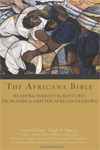 |
Page, Hugh et al. Marbury, Herbert R, ed. The Africana Bible: Reading Israel’s Scriptures from Africa and the African Diaspora (Ezra–Nehemiah). Minneapolis, MN: Fortress Press, 2009. pp. 280–285. |
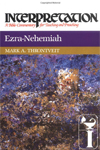 |
Throntveit, Mark. Interpretation: A Bible Commentary for Preaching and Teaching (Ezra–Nehemiah).Louisville, KY: Westminster John Knox Press, 1992. |
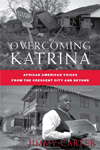 |
Penner, D’Ann, and Keith Ferdinand. Overcoming Katrina: African-American Voices in the Crescent City and Beyond. New York, NY: Palgrave Macmillan Publishing, 2009. |
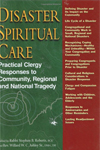 |
Roberts, Stephen, and Willard Ashley, eds. Disaster Spiritual Care: Practical Clergy Responses to Community, Regional, and National Tragedy. Woodstock, VT: SkyLight Paths Publishing, 2008. |
Notes
1. “After Two Major Overseas tragedies, Americans are less generous.” Associated Press, May 19, 2008.
2. Disaster Fatigue. Online location:
http://www.sitnews.us/0905news/092205/092205_shns_rita_fatigue.html accessed 24 January 2012



